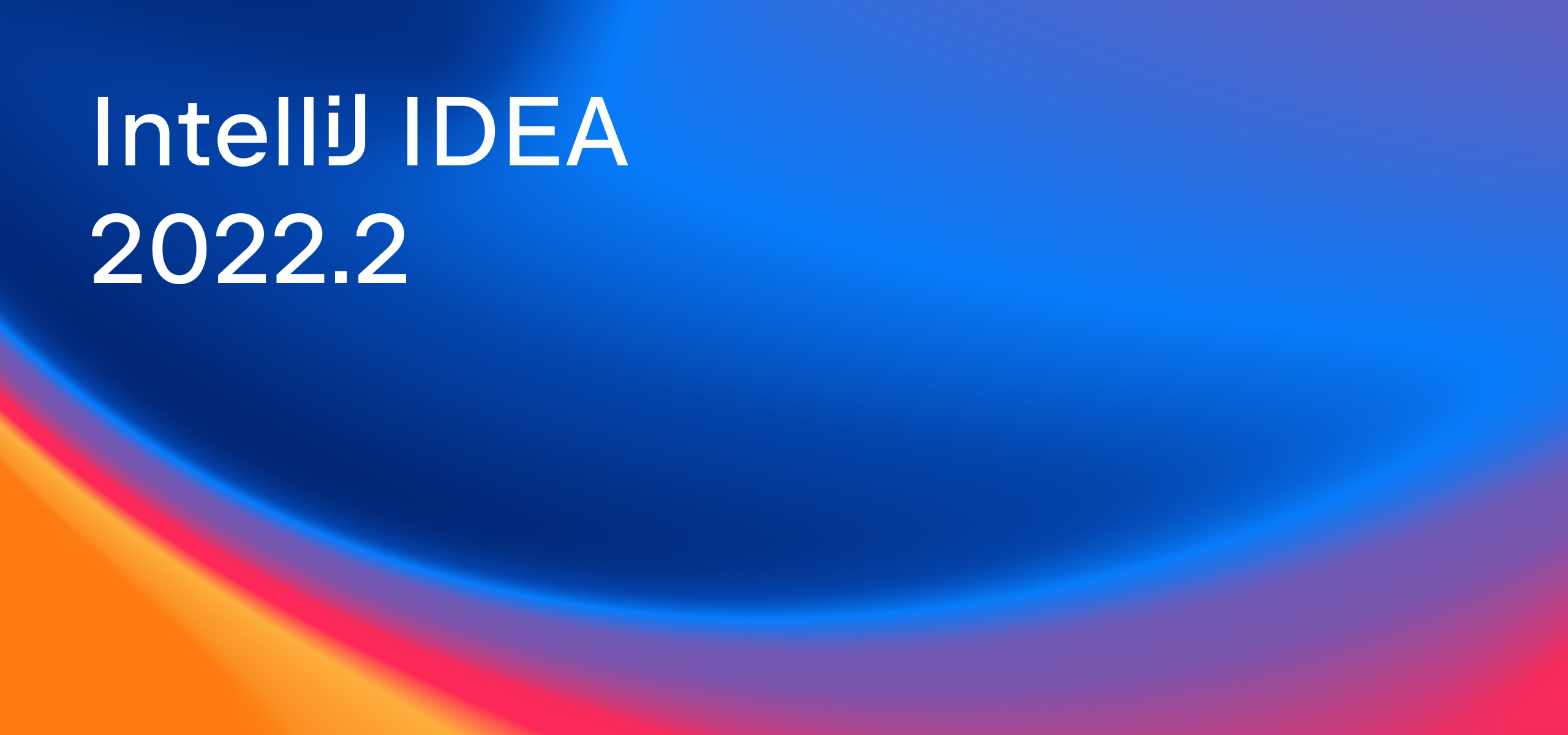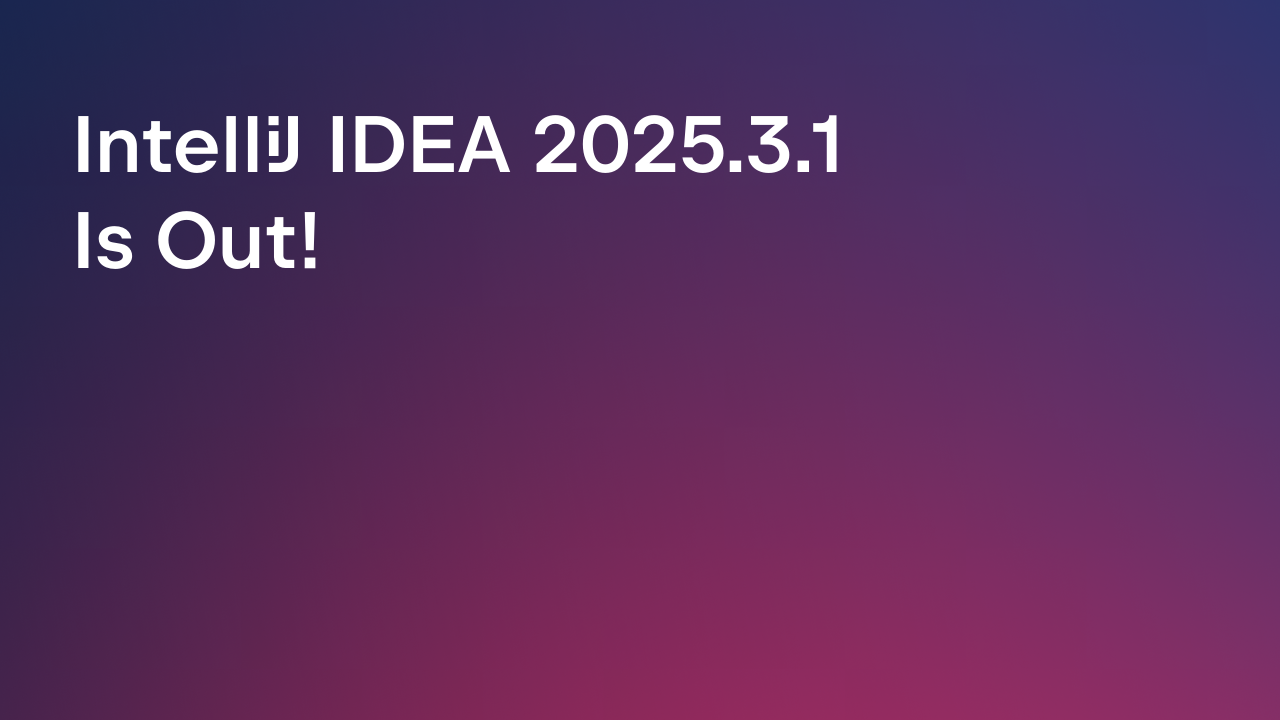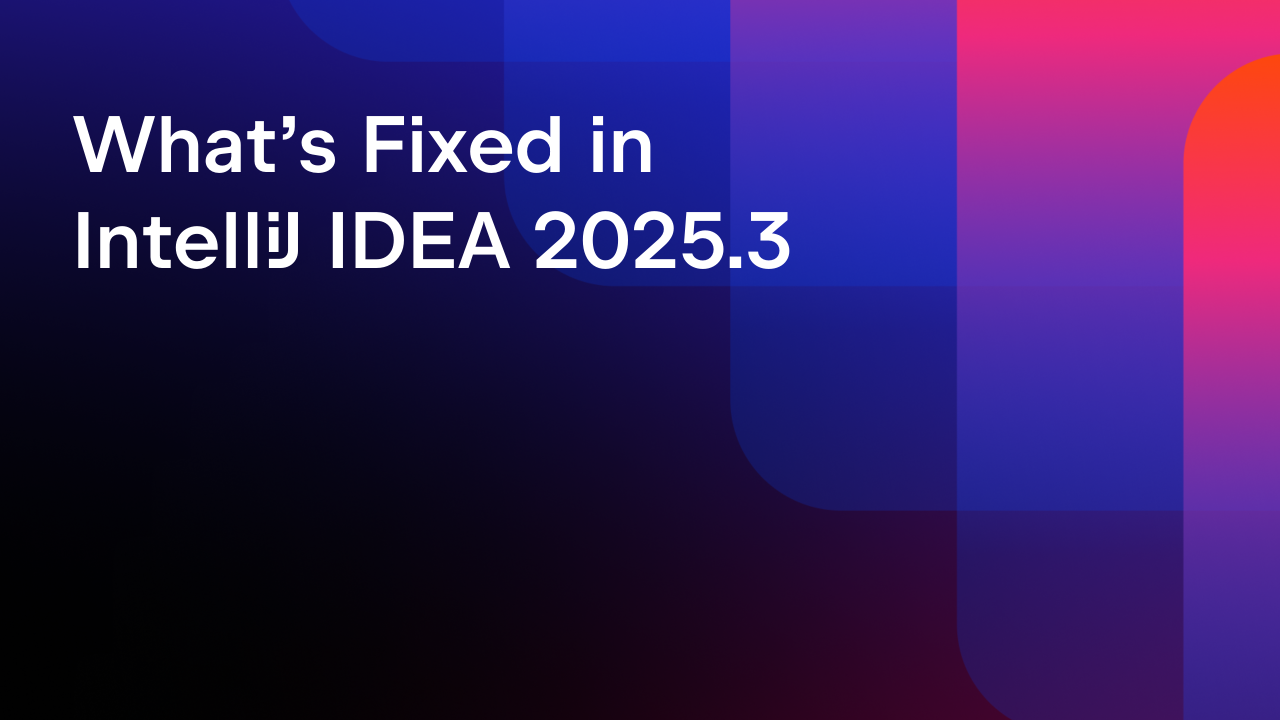IntelliJ IDEA
IntelliJ IDEA – the Leading IDE for Professional Development in Java and Kotlin
IntelliJ IDEA 2022.2 Is Out!
IntelliJ IDEA 2022.2 is now available, bringing a range of noteworthy upgrades and refinements to the IDE.
This new version includes multiple quality improvements to the remote development Beta, making its functionality sleeker and more stable to work with. As of v2022.2, IntelliJ IDEA uses JetBrains Runtime 17, which enhances the IDE’s performance, security, and user experience. IntelliJ IDEA Ultimate now supports the Spring 6 and Spring Boot 3 features and introduces updates for several other frameworks. We have also upgraded the Kotlin debugger with Data Flow Analysis assistance, introduced a Run Current File feature to instantly run and debug single files, implemented a range of improvements to Java inspections, added several UI/UX updates, and more.
You can download the new version from our website, update directly from the IDE, update via the free Toolbox App, or use snaps for Ubuntu.
Read the blog post to learn more about the most notable updates in this release.

Key Updates
- We’ve introduced a number of upgrades and quality improvements to the remote development Beta in IntelliJ IDEA 2022.2, which aim to make your experience more stable and feature-rich. Connect your laptop via SSH to IntelliJ IDEA installed on a remote server and get a fluid developer experience. No matter how powerful your laptop is, you can get the full power of the IDE while all of the processing is done on the remote server. If you’re using JetBrains Space to orchestrate backends efficiently with the new version, you can now manage your dev environments directly from IntelliJ IDEA. Find more details in this blog post.
- As of v2022.2, IntelliJ IDEA uses JetBrains Runtime 17, which brings a significant IDE performance improvement, better security, enhanced rendering performance on macOS thanks to the Metal API, and more. More details are in this blog post.
- IntelliJ IDEA Ultimate now fully supports Spring 6 and Spring Boot 3 features, including declarative HTTP clients, @AutoConfiguration classes, and @ConfigurationProperties classes with the new constructor binding syntax without explicit @ConstructorBinding.
User Experience
- We’ve introduced the new Run Current File functionality that makes it easy to instantly run and debug single files without having a dedicated run configuration. The option is available from the Run/Debug widget and works for the file you currently have open.
- There’s a new keyboard shortcut that changes the font size everywhere in the editor. Also, a new font size indicator shows the current font size along with the option to revert it back to the default.
- For macOS, we’ve introduced the Merge All Project Windows action that pools all opened project windows into one, turning each window into its own tab.
- We’ve enhanced how highlighting inspections are configured so that you can set the way inspections appear in the editor without changing their severity level.
- The Cloning repository progress bar now appears on the IDE’s Welcome screen and is shown right in the projects list.
- The Add Mnemonic Bookmark dialog now has a Description field.
Editor
- There’s a new setting to disable automatic block comment closure when pressing Enter.
- We’ve enabled faster access to Code Completion Settings right from the kebab (three vertical dots) menu button in the code completion popup.
- IntelliJ IDEA now notifies you about a file being erroneously associated with plain text and suggests resetting the file type association right from the editor.
- It’s now possible to easily generate tables of contents in Markdown files based on the document headers.
Java
- We’ve implemented a range of changes to Java inspections and introduced new ones to help you track down potential bugs and simplify code. To learn more about other Java-related improvements, read our blog post.
Kotlin
- IntelliJ IDEA’s native builder now uses the version of the Kotlin compiler configured in the project. Learn more in this blog post.
- Our latest work to optimize indexes has made code highlighting, completion, and Find Usages faster and more responsive.
- We’ve integrated the Kotlin debugger with the Data Flow Analysis functionality for more precise condition evaluation.
- IntelliJ IDEA 2022.2 now supports the features introduced in Kotlin 1.7.0, the latest language version.
Scala
- IntelliJ IDEA provides better Scala 3 support and now can read match types from .tasty files, properly parse them, resolve type variables, use them as type arguments, support inspections, and show types as text.
- IntelliJ IDEA 2022.2 comes with new Scala inspections.
- Two new actions, Put arguments on separate lines and Put arguments on one line, help you manage the length of your code lines.
- Compiler-based highlighting has been tuned for better resource usage. The IDE now respects the file highlighting settings defined by the user.
- The Safe Delete action is now available for type parameters.
Groovy
- The IDE now provides syntax highlighting, code completion, and inspections for Groovy-Integrated Queries (GINQ).
Security
- IntelliJ IDEA 2022.2 can now help you import trusted SSL certificates from system trust stores. It will automatically use the custom certificates specific to your enterprise environment.
Profiler
- When you start profiling, the CPU and Heap Memory live charts now appear side by side with the console. This allows you to see how your application is performing while also collecting multiple snapshots from the same application within the desired profiling period.
- Kotlin inline functions are now shown along with others in the Flame Graph, the Call Tree, and the Method List, allowing you to see their CPU time and optimize it, if needed.
Frameworks and technologies
- IntelliJ IDEA Ultimate now provides URL completion, Search Everywhere functionality, and Find Usages hints for Spring Cloud Gateway URLs.
- We’ve improved navigation between Protobuf and Java sources, so now you can easily navigate to code generated from .proto files and back.
- IntelliJ IDEA Ultimate can now help you with debugging GraalVM native image binaries. You can attach the debugger to any GraalVM-based executable or start your application with the debugger attached.
- IntelliJ IDEA 2022.2 automatically highlights JSON/XML bodies in tests with popular Java APIs, such as Spring WebTestClient, RestAssured, WireMock, and MockServer.
- Code insight improvements for Spring Shell have been implemented, and the IDE now recognizes CLI commands declared with the Spring Shell library and checks their correctness.
- IntelliJ IDEA Ultimate provides improved support for JAX-RS endpoints.
- IntelliJ IDEA Ultimate 2022.2 supports WebSocket connections, allowing you to create requests, and send and receive messages.
- IntelliJ IDEA Ultimate can now send GraphQL queries over HTTP and WebSocket protocols out of the box.
- UI/UX improvements to the HTTP client include a convenient way to select a run environment by using an icon in the gutter. To enable it, choose the Select Environment Before Run option from the Run with combo box. We’ve also upgraded the Response view with a progress bar, which allows you to track the downloading process.
- JSON, YAML, and .properties files now feature automatically inserted web references inside values that start with http:// and https:// and can be opened in a web browser with one click.
- IntelliJ IDEA 2022.2 now provides references and supports folding for message attributes in Bean Validation annotations in Java and Kotlin.
- We have reworked the AWS CloudFormation plugin by updating metadata schemas and improving property completion.
- IntelliJ IDEA Ultimate now supports all of the features in Jakarta Persistence 3.1.
Docker
- IntelliJ IDEA 2022.2 introduces image completion for the Testcontainers API, where you can find all available Docker images and their versions.
- It is now possible to easily copy images from one Docker daemon to another with the new Copy Docker Image action.
- IntelliJ IDEA now automatically connects to Docker after you restart the IDE.
- As of v2022.2, IntelliJ IDEA integrates with Colima and Rancher to support more options for establishing connections to a Docker daemon.
Kubernetes
- The Kubernetes plugin for IntelliJ IDEA 2022.2 provides integration with the Telepresence tool.
QA tools
- The Page Object Editor now features an improved web page structure UI.
- You can now easily navigate through page elements by using gutter icons.
- The New Selenium Page Object wizard now offers an optional URL field. If the web address is included, the wizard suggests a page object file name based on the link address.
- As you add new page elements to your code, the caret now automatically moves to the end of the added code block.
- You can now create a new page object right from the context menu that appears with the unresolved code warning.
Database tools
- You can now select multiple CSV files and import them at once.
- The new UI for the Modify dialog has become the default option, and all of a table’s child objects can be added and edited by using this new UI. Learn more.
- To ensure that database objects in SQL scripts are resolved more precisely, we’ve implemented two resolve modes: Playground and Script. Learn more.
Web development
- We’ve added support for Angular standalone components, and the IDE now properly recognizes components, directives, and pipes marked as standalone: true.
- IntelliJ IDEA Ultimate provides better support for Vue 3. Also, support for Pinia, the Vue team’s recommended state management solution that works as a global store, has been improved.
- IntelliJ IDEA Ultimate comes bundled with TypeScript 4.7, supporting new language features like moduleSuffixes and ESM in Node.js.
Other
- The Android plugin bundled with IntelliJ IDEA now provides all the features of Android Studio Chipmunk, including support for the Android Gradle Plugin (AGP) 7.2.x.
These are the most notable improvements introduced in IntelliJ IDEA 2022.2. You can find a more detailed list of updates in the release notes.
We’d love to get your feedback regarding the new features and enhancements – it’s what drives us to develop a product that you enjoy working with. Please share your thoughts and suggestions on Twitter, via our issue tracker, or in the comments section below.
Happy developing!
Subscribe to IntelliJ IDEA Blog updates








